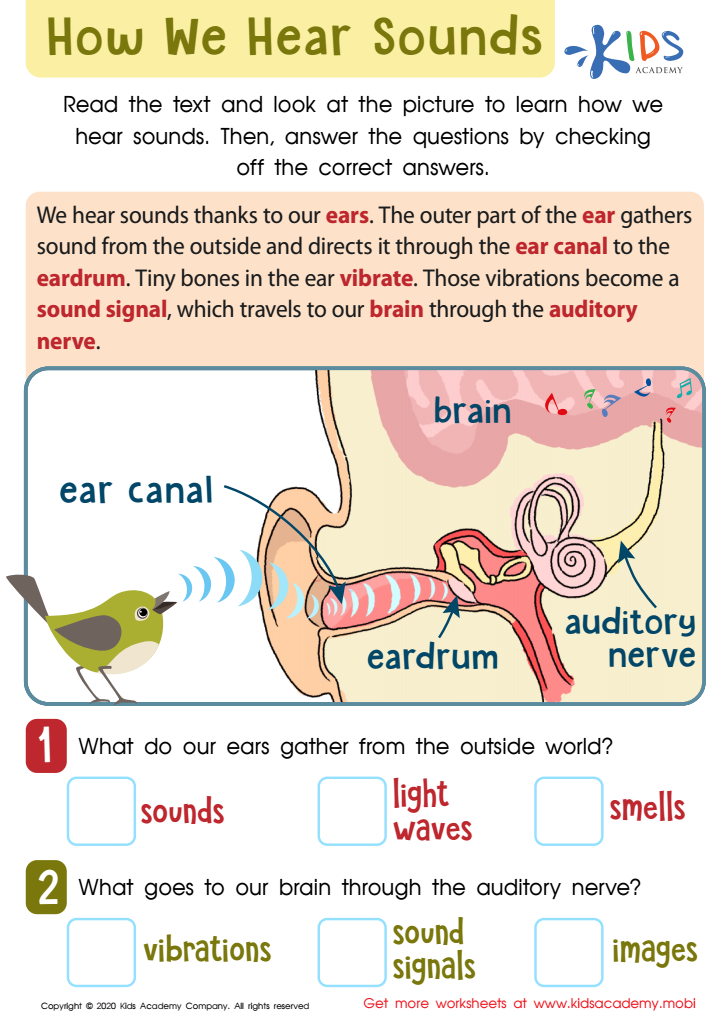Comprehending ear structure Worksheets for Kids
1 filtered results
-
From - To


How We Hear Sounds Worksheet
Question/Answer
How does the mastery of the Comprehending ear structure skill affect a student's performance at an early age?
Mastery of the Comprehending Ear Structure skill at an early age significantly improves a student's auditory processing abilities. This foundation enhances listening skills, phonetic awareness, and language acquisition, leading to better communication, reading, and academic performance. Early mastery in this area can also foster a heightened sensitivity to sound, benefiting music and language learning.
Why is the Comprehending ear structure skill important for Grade 1 students?
Understanding ear structure is important for Grade 1 students because it lays the foundation for their comprehension of how we hear. This knowledge fosters curiosity about the human body, enhances their ability to follow health advice (like protecting their ears), and supports the early development of science concepts, contributing to their overall cognitive development.
What are some effective activities to train students’ Comprehending ear structure skill when teaching them about Physical Science?
Effective activities to train students’ comprehension of ear structure in a Physical Science context include interactive models building, labeling exercises, virtual dissections or 3D software exploration, comparative anatomy studies (human vs. animals), auditory experiments to explore sound transmission, and engaging in Q&A sessions after watching detailed videos or animations on ear anatomy and its function in hearing.
 Assign to the classroom
Assign to the classroom









